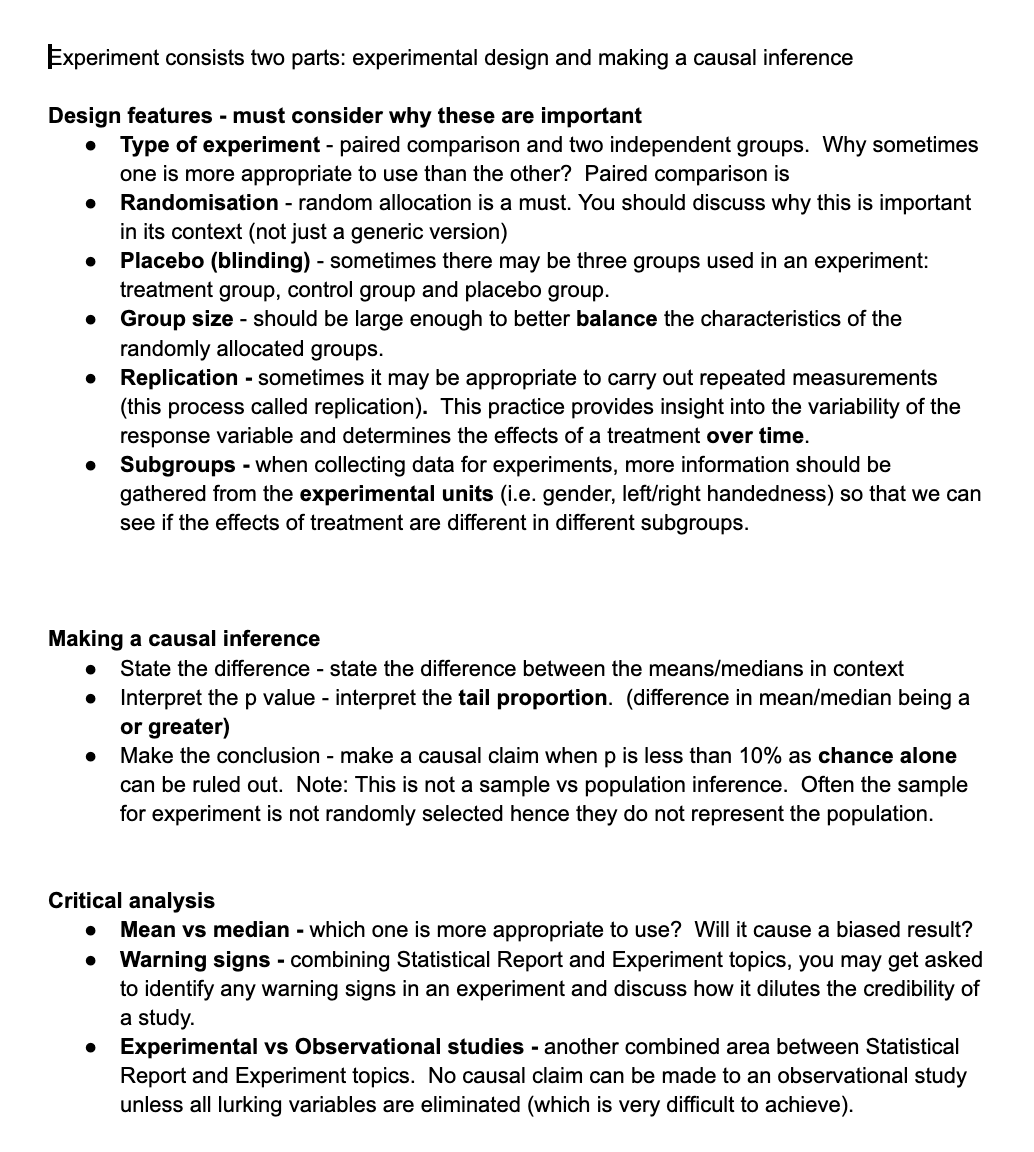What are the key design features to consider in experimental design, how do you make a causal inference, and what critical analysis should be conducted when evaluating experiments?

Understand the Problem
The question is outlining the components of experimental design, the importance of making causal inferences, and the critical analysis required in evaluating experiments. The key concepts involve types of experiments, the necessity of randomization, the role of placebo, group size, replication, subgroups, and how to interpret statistical data such as p-values.
Answer
Key design features: type of experiment, randomization, placebo, group size, replication, subgroups. For causal inference: state difference, interpret p-value, and conclude with p < 0.1. Critical analysis: mean vs. median, warning signs, experimental vs. observational studies.
The key design features to consider in experimental design include type of experiment, randomization, placebo or blinding, group size, replication, and subgroups. To make a causal inference, state the difference, interpret the p-value, and conclude based on the p-value being less than 10%. Critical analysis should address mean vs. median, warning signs for study validity, and the differences between experimental and observational studies.
Answer for screen readers
The key design features to consider in experimental design include type of experiment, randomization, placebo or blinding, group size, replication, and subgroups. To make a causal inference, state the difference, interpret the p-value, and conclude based on the p-value being less than 10%. Critical analysis should address mean vs. median, warning signs for study validity, and the differences between experimental and observational studies.
More Information
Experimental designs allow researchers to establish causality by manipulating one or more variables and observing the effects. A thorough critical analysis ensures the validity and reliability of the findings.
Tips
Common mistakes include not randomizing properly, inadequate group sizes leading to imbalanced characteristics, and not accounting for potential confounders.
Sources
- Quasi-Experimental Designs for Causal Inference - PMC - NCBI - ncbi.nlm.nih.gov
- Guide to Experimental Design | Overview, 5 steps & Examples - scribbr.com
- Chapter 10 Experimental Research - courses.lumenlearning.com